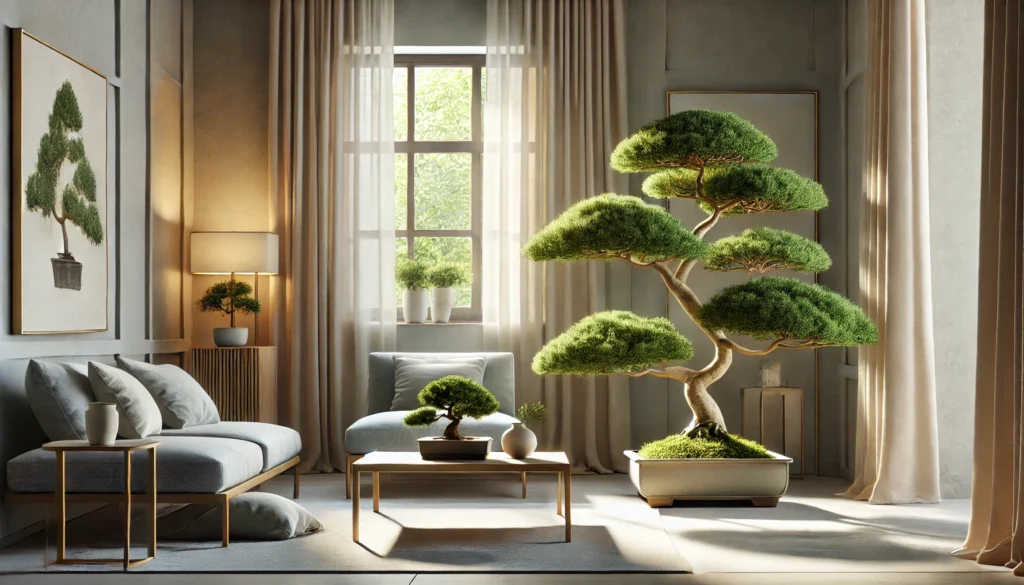
Bonsai Tree Juniper Indoors: Essential Care Tips for Thriving Indoor Trees
Bringing a bonsai tree juniper indoors can add a touch of natural elegance to your living space, but it can also present unique challenges. Are you struggling with browning needles, slow growth, or simply unsure about how to care for your indoor juniper? You’re not alone! These stunning trees require specific care to thrive indoors.
In this guide, we’ll cover everything you need to know to ensure your bonsai tree juniper stays healthy and vibrant. From optimal lighting conditions to watering tips and the right soil, we’ve got you covered. Read on to discover the best practices for growing a thriving juniper bonsai indoors!
Table of Contents
ToggleWhy Choose a Bonsai Tree Juniper Indoors?
A bonsai tree juniper indoors isn’t just a beautiful addition to your home—it’s a perfect choice for both beginners and seasoned plant lovers. Here’s why:
1. Compact and Stylish 
Junipers make an eye-catching indoor bonsai due to their unique, twisting branches and vibrant green foliage. Their compact size fits easily in any room, whether on a coffee table, windowsill, or desk. It’s the perfect tree for small spaces that crave a touch of nature.
2. Low Maintenance for Beginners 
Unlike other indoor plants that require constant attention, junipers are relatively easy to care for, especially if you follow the basics of watering, pruning, and sunlight. They can handle minor neglect, making them a great option for those new to bonsai care.
3. Air-Purifying Benefits 
Indoor bonsai trees, including junipers, help purify the air by absorbing toxins and releasing oxygen. This contributes to a cleaner and fresher indoor environment, which can be particularly beneficial in homes or offices with limited natural airflow.
4. Adaptable to Various Indoor Conditions 
While junipers thrive outdoors, they adapt well to indoor environments. With the right care, such as adequate sunlight and occasional pruning, they can flourish indoors year-round. Plus, junipers are fairly hardy and can withstand changes in temperature and humidity levels that often affect indoor plants.
By choosing a bonsai tree juniper indoors, you’re adding a resilient, stylish plant that’s easy to care for and contributes to a healthier living space.
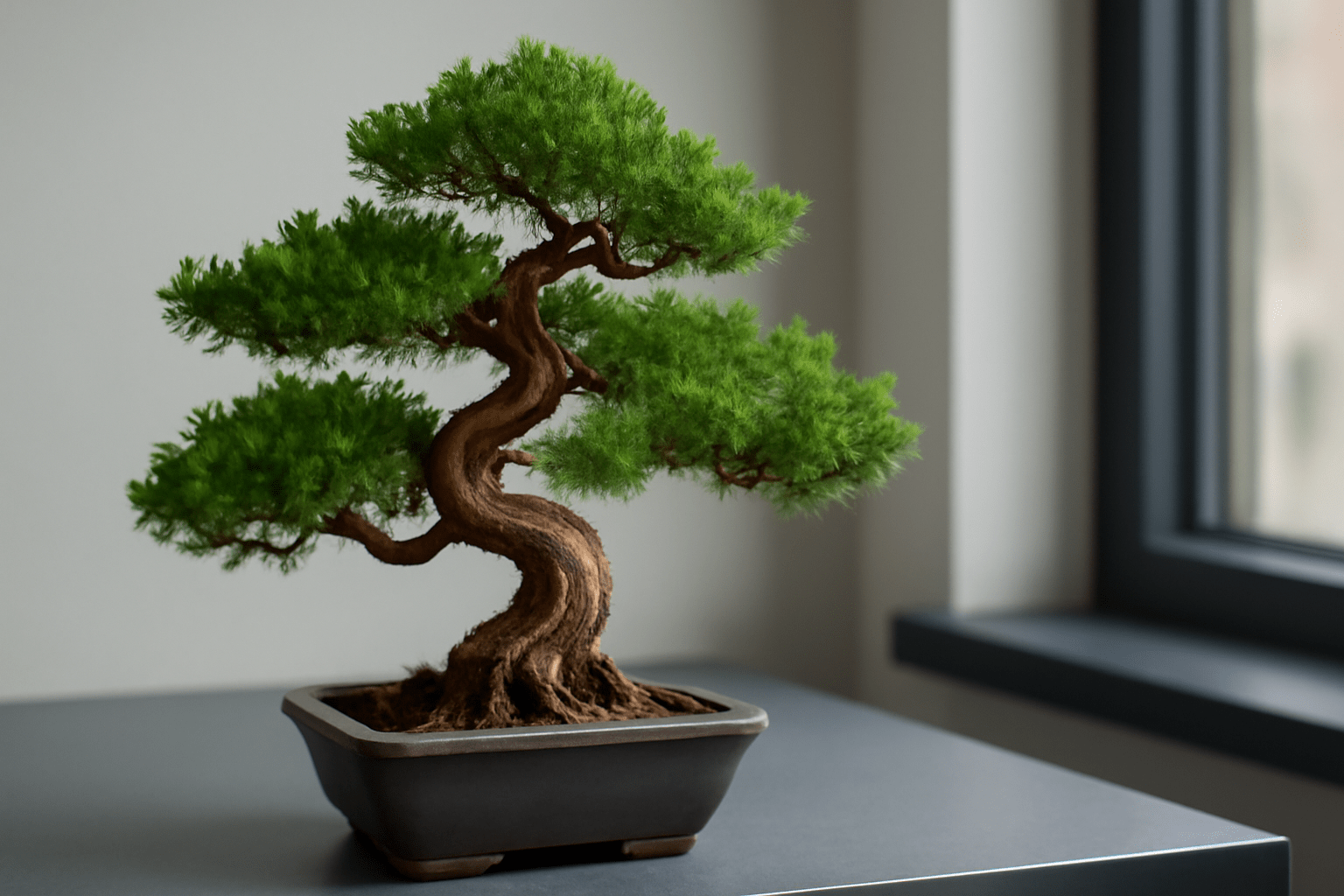
Understanding the Unique Needs of Bonsai Tree Junipers Indoors
Caring for a bonsai tree juniper indoors requires a bit more attention than regular houseplants, but the rewards are well worth the effort. These miniature trees may be small in size, but they come with unique care needs that ensure they thrive in your home.
1. Proper Lighting 
Junipers need plenty of sunlight to stay healthy, even indoors. Place your bonsai tree juniper indoors near a window where it can get 4-6 hours of indirect light each day. A south-facing window is often ideal. If natural light is limited, consider using grow lights to supplement sunlight, especially during the winter months.
2. Temperature and Humidity 
Junipers prefer cooler temperatures and moderate humidity. Keep your tree in a room with temperatures between 60-75°F (15-24°C). Avoid placing it near heat sources like radiators or air conditioners, which can dry out the air and cause stress. Using a humidity tray or a gentle misting can help maintain optimal moisture levels.
3. Watering Needs 
Overwatering is a common mistake with indoor junipers. These trees thrive in well-drained soil, and the key is to let the soil dry out between waterings. Ensure your pot has proper drainage, and water thoroughly when the top inch of soil feels dry to the touch. During the winter, you may need to water less frequently.
4. Soil and Potting 
Junipers prefer slightly acidic, well-draining soil. A mix designed for bonsai trees or a combination of akadama, pumice, and lava rock works well. Repotting every 2-3 years helps maintain root health, but be sure to prune the roots gently to avoid stressing the tree.
5. Pruning and Shaping 
Pruning is essential to keep your bonsai tree juniper indoors in shape. Regular trimming encourages new growth and helps maintain the tree’s miniature size. Focus on removing dead or yellowing branches and shaping your tree to fit the desired style. Be patient and avoid over-pruning, as this can lead to stress.
By understanding and meeting these unique needs, you can create an ideal environment for your bonsai tree juniper indoors, ensuring it thrives and adds beauty to your home for years to come!
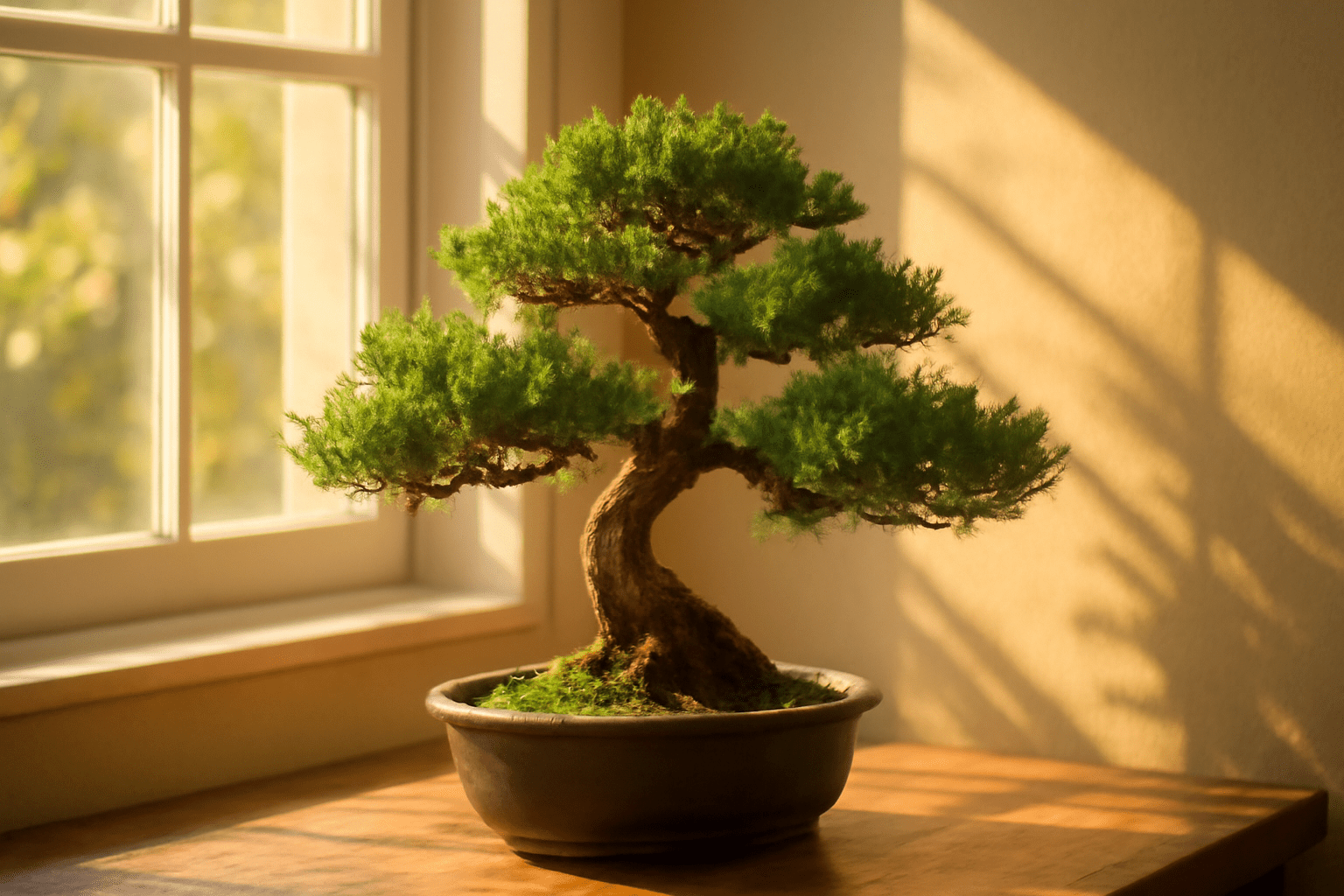
Best Location for Your Bonsai Tree Juniper Indoors
Choosing the right location for your bonsai tree juniper indoors is crucial for its health and growth. These hardy trees need specific conditions to thrive inside, and the wrong spot can lead to stress, browning needles, and stunted growth. Here’s how to pick the perfect place for your juniper:
1. Plenty of Bright, Indirect Light 
Junipers love light, but direct sunlight can scorch their delicate leaves. Aim to place your bonsai tree juniper indoors near a window where it will receive bright, indirect sunlight for at least 4-6 hours a day. A south-facing window is ideal, but if that’s not possible, east or west-facing windows work well too.
2. Avoid Drafts and Extreme Temperatures 
Your juniper is sensitive to temperature fluctuations, so it’s important to avoid placing it near air vents, heaters, or air conditioners. Drafts can cause stress and make it harder for your tree to stay healthy. Keep it in a spot where the temperature remains steady, ideally between 60-75°F (15-24°C).
3. Maintain Good Air Circulation 
Proper airflow helps prevent fungal diseases and promotes healthy growth. Ensure that the location you choose for your bonsai tree juniper indoors has good ventilation. Avoid cramming it in a tight, closed-off space and let air circulate freely around the plant.
4. Avoid Humid Areas 
Junipers don’t thrive in overly humid environments. Bathrooms or kitchens, while often humid, are not the best spots for your juniper. Instead, find a place in your living room or another well-ventilated area with moderate humidity.
5. Consider a Bonsai Stand or Tray 
Using a bonsai stand or tray can help elevate your tree, providing better visibility and airflow. It also ensures that the soil drains properly and reduces the risk of waterlogging.
By choosing the right location, you’re setting your bonsai tree juniper indoors up for success. A well-positioned tree will grow stronger, healthier, and more vibrant, adding beauty to your home for years to come!
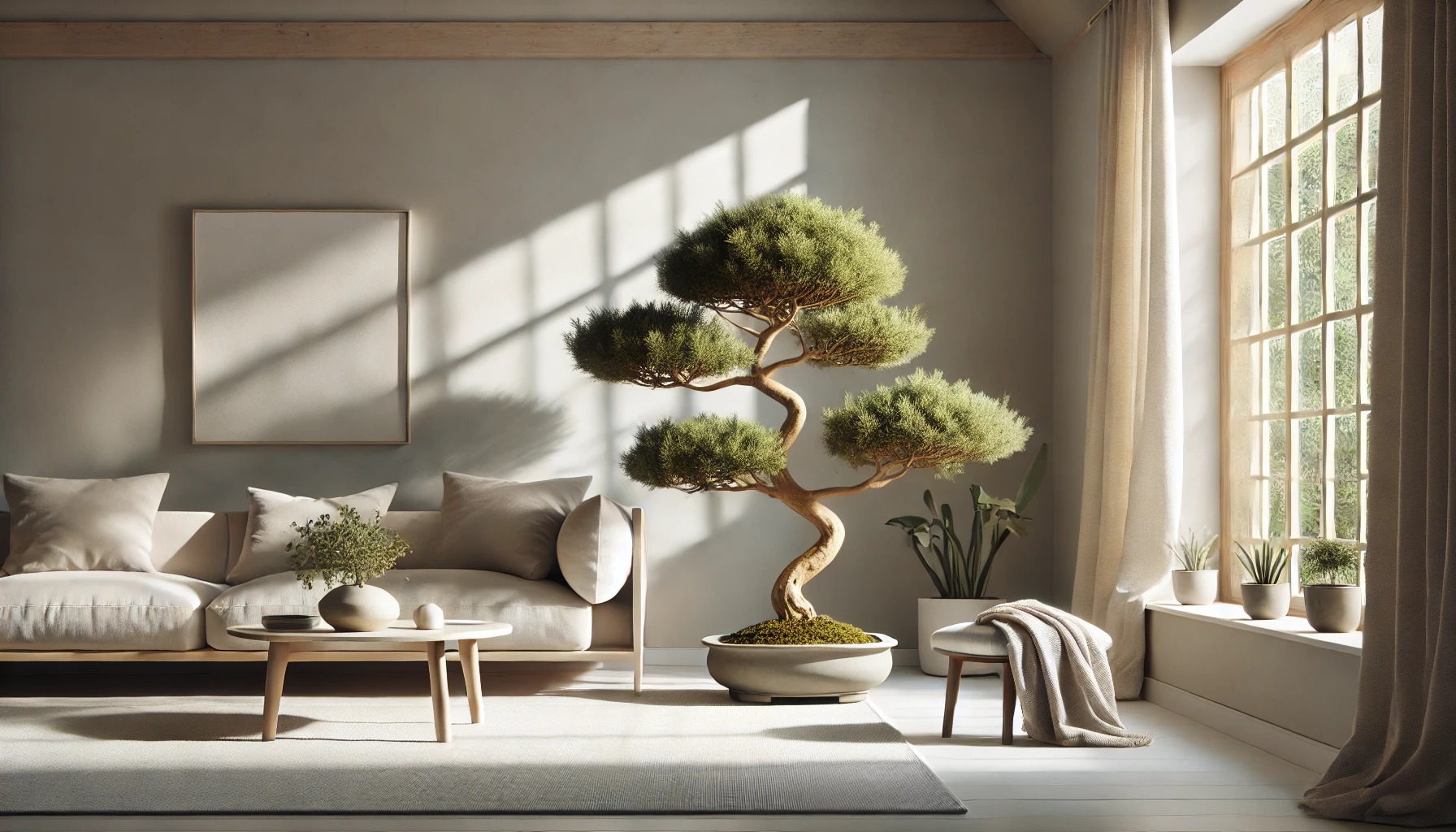
Watering and Moisture Control for Bonsai Tree Junipers Indoors
Proper watering is crucial for keeping your bonsai tree juniper indoors healthy and thriving. Too much or too little water can lead to stress, browning needles, or even root rot. Here’s how to get it just right.
1. Know When to Water 
The key to successful watering is consistency. Junipers prefer slightly dry soil between waterings, so avoid keeping the soil constantly wet. Check the soil by sticking your finger about an inch deep—if it feels dry, it’s time to water.
- Tip: Water thoroughly until it drains from the bottom of the pot. This ensures the roots receive adequate moisture without staying soggy.
2. Watering Frequency 
Junipers don’t need frequent watering, especially during the winter when they are less active. During the growing season, water once every 5-7 days, but adjust based on your home’s humidity and temperature. In winter, you may only need to water once every 10-14 days.
3. Humidity Matters 
Indoor environments can be dry, especially during winter when heating systems run. Junipers, being native to more temperate regions, need some humidity to stay healthy. To increase moisture, try placing a humidity tray under your pot or misting the tree lightly every few days.
4. Avoid Watering on the Foliage 
When watering your bonsai tree juniper indoors, make sure to water the soil, not the foliage. Wet leaves can lead to fungal issues and browning. Focus on moistening the root zone to give your juniper the hydration it needs without creating excess moisture on the branches.
5. Drainage is Key 
Proper drainage is a must. If your bonsai’s pot doesn’t have drainage holes, the water will pool at the bottom, causing root rot. Ensure your pot has good drainage, and avoid saucers that trap water underneath.
By following these simple watering tips, your bonsai tree juniper indoors will have the moisture balance it needs to grow strong and healthy!
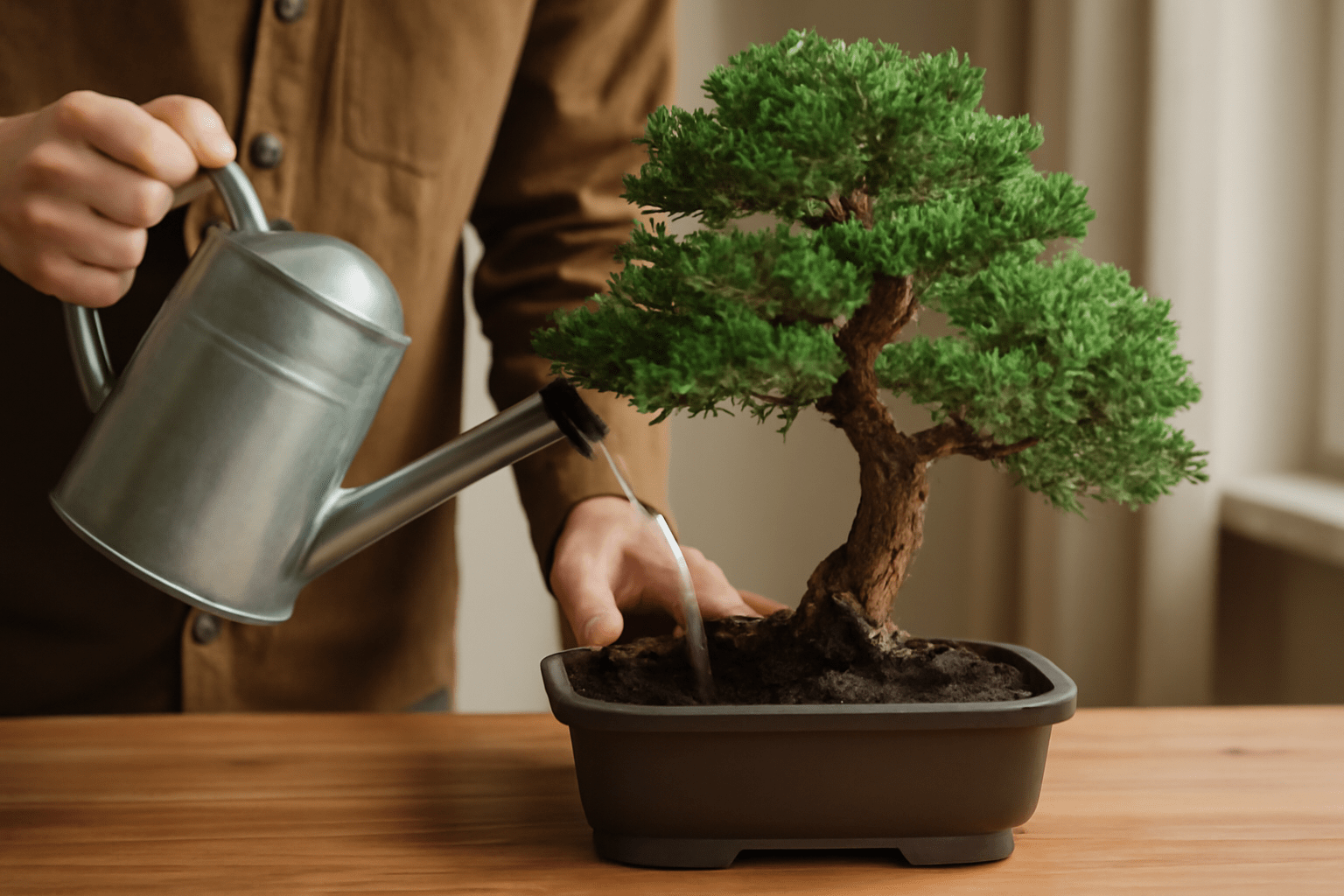
Soil and Potting for Bonsai Tree Junipers Indoors
When it comes to keeping your bonsai tree juniper indoors healthy and thriving, choosing the right soil and potting setup is crucial. The wrong soil or an inadequate pot can lead to poor growth and even root rot. Here’s what you need to know to ensure your tree gets the best start in its new home.
1. Choose Well-Draining Soil 
Junipers, especially when grown as bonsai, need soil that drains quickly to prevent water from pooling around the roots. The best soil mix for bonsai tree juniper indoors is one that combines:
- Akadama: A clay-based soil that retains moisture but drains well.
- Pumice: Helps with aeration and prevents compaction.
- Lava rock: Improves drainage and provides essential minerals.
A mixture of 50% akadama, 25% pumice, and 25% lava rock is an excellent choice for indoor juniper bonsai. This mix ensures that water flows freely, preventing root rot while still holding onto enough moisture for the tree to thrive.
2. Pot Selection and Size 
The right pot is just as important as the soil. When selecting a pot for your bonsai tree juniper indoors, look for one with drainage holes to avoid water accumulation. The pot should be large enough to allow the roots to spread but not too large that it holds excess moisture. A pot that’s slightly wider than the root system is ideal for junipers.
Ensure the pot’s material is breathable. Ceramic or unglazed clay pots are perfect, as they allow for better airflow to the roots compared to plastic pots.
3. Repotting Tips 
As your bonsai tree juniper indoors grows, it will need to be repotted every two to three years. Repotting allows the roots to stay healthy and prevents them from becoming root-bound. When repotting, remove about one-third of the root mass to encourage new growth. Always refresh the soil mix to ensure proper nutrients and drainage.
4. Positioning the Pot 
Once your juniper is potted, make sure it’s placed in an area where it will get enough light. Junipers need bright, indirect light to thrive indoors. Ensure the pot is placed on a surface that allows for adequate airflow, preventing the soil from becoming too wet.
By using the right soil, potting your bonsai tree juniper indoors correctly, and repotting it when necessary, you’ll create the perfect environment for your tree to flourish!
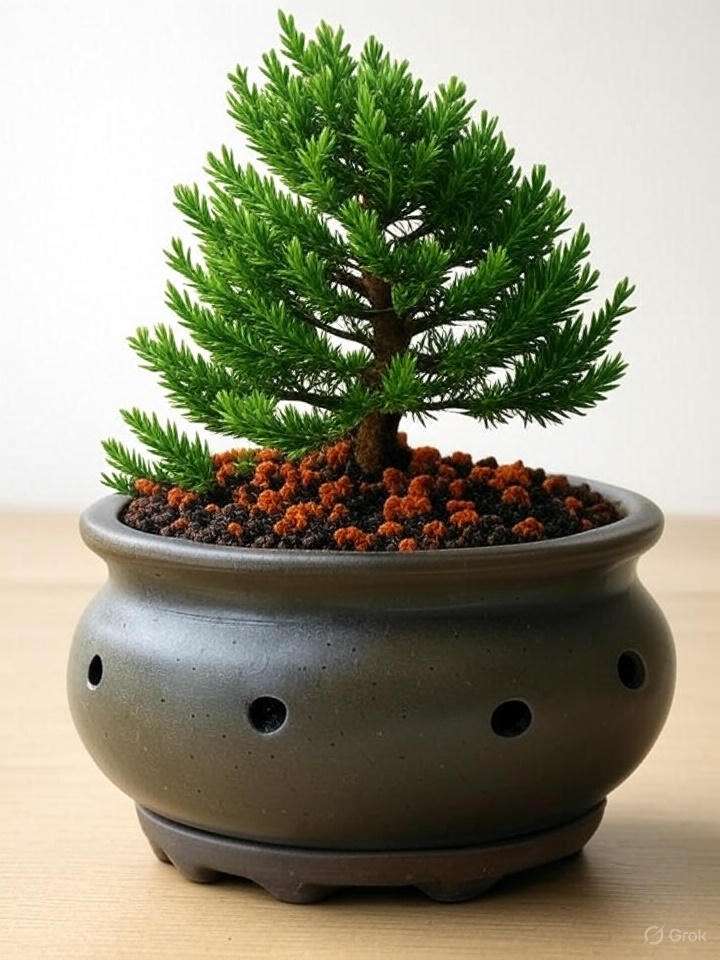
Pruning and Shaping Your Bonsai Tree Juniper Indoors
Pruning and shaping your bonsai tree juniper indoors is essential for maintaining its health and ensuring it grows in a visually pleasing form. With the right techniques, you can encourage new growth, improve airflow, and shape the tree to reflect your unique style. Here’s how to get it just right!
1. When to Prune Your Juniper Bonsai 
The best time to prune your bonsai tree juniper indoors is during the growing season, typically in late spring or early summer. This allows your tree to heal quickly and encourages vigorous new growth. Avoid heavy pruning during the winter months, as your juniper is in a dormant state and may not recover as well.
2. Tools You’ll Need 
To ensure a clean cut, use sharp bonsai shears or pruning scissors. Dull tools can damage the branches and hinder the tree’s natural healing process. Make sure your tools are sanitized to prevent the spread of diseases.
3. How to Prune for Health 
Start by removing any dead or yellowing branches. This prevents the spread of pests or diseases and ensures that the tree’s energy goes into healthy growth. Next, trim back any overgrown branches to maintain the desired shape, but avoid cutting too much at once. A little pruning goes a long way!
4. Shaping Your Bonsai Tree Juniper Indoors 
Shaping is about creating a balanced, aesthetic structure. Focus on cutting back branches that disrupt the overall symmetry of the tree. When shaping, always cut above a leaf node or branch fork, encouraging new growth from that point. Use wire sparingly to guide the branches into position. Be sure to check regularly and adjust the wire to avoid damaging the bark.
5. Aftercare for Pruned Juniper Bonsai 
After pruning, give your bonsai tree juniper indoors a bit of extra attention. Ensure it receives proper watering, light, and humidity. It’s normal for the tree to experience a slight shock after pruning, but with proper care, it will bounce back stronger.
By regularly pruning and shaping your bonsai tree juniper indoors, you’ll not only improve its appearance but also promote its long-term health. A well-maintained juniper can become a stunning centerpiece in your home!
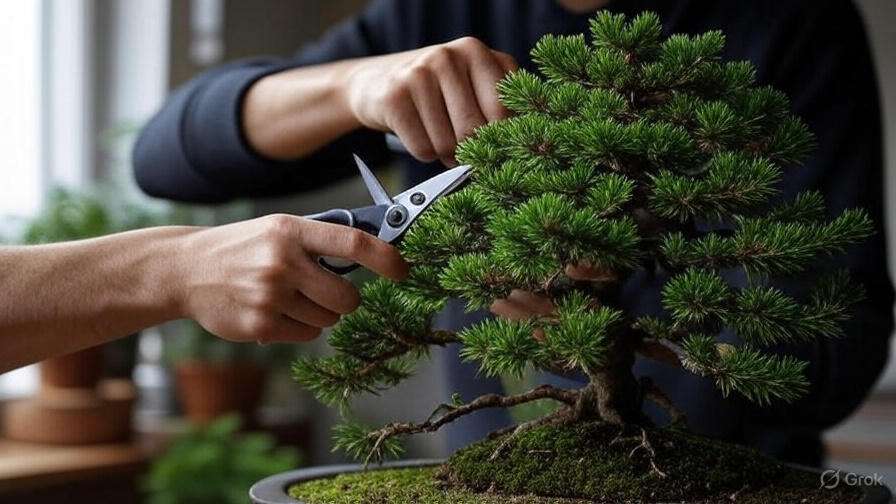
Common Problems with Bonsai Tree Junipers Indoors and How to Fix Them
Caring for a bonsai tree juniper indoors can be incredibly rewarding, but it’s not without its challenges. If you’ve noticed your juniper isn’t thriving the way it should, you’re not alone. Let’s explore some of the most common problems and how to fix them.
1. Overwatering or Underwatering 
One of the biggest mistakes when caring for indoor junipers is improper watering. Both overwatering and underwatering can stress the tree, causing browning or yellowing of the leaves.
- How to fix it: Check the soil regularly. It should be slightly dry to the touch between waterings. Make sure your pot has drainage holes to prevent waterlogging, which can lead to root rot.
2. Lack of Sunlight 
Junipers need plenty of bright, indirect light to thrive indoors. Without enough sunlight, they can become leggy, weak, or start turning brown.
- How to fix it: Place your bonsai tree juniper indoors near a south- or west-facing window where it can get 4–6 hours of indirect sunlight daily. If natural light is insufficient, consider supplementing with a grow light.
3. Pests 
Indoor junipers are susceptible to pests like spider mites, aphids, and scale insects. These tiny critters can drain your plant’s energy, causing it to become unhealthy.
- How to fix it: Inspect your juniper regularly for signs of pests. If you spot any, wipe the affected areas with a damp cloth or use neem oil to safely remove them. Regularly cleaning the leaves also helps prevent pest buildup.
4. Improper Temperature and Humidity 
Bonsai tree junipers are sensitive to extreme changes in temperature. Dry indoor air or temperatures that are too hot or too cold can cause stress.
- How to fix it: Keep your juniper in a location where the temperature remains stable, ideally between 60°F and 75°F (15°C – 24°C). Consider using a humidity tray or misting the tree to maintain the right level of moisture in the air.
5. Poor Soil Drainage 
If your juniper is planted in poorly-draining soil, it can lead to root rot or nutrient deficiencies, affecting its overall health.
- How to fix it: Ensure that your bonsai is planted in well-draining soil. A mixture of akadama, pumice, and lava rock works well for junipers. Repot your tree every couple of years to refresh the soil and prevent compaction.
By identifying and addressing these common problems, you can ensure your bonsai tree juniper indoors remains healthy, vibrant, and thriving. Keep a close eye on your tree’s needs, and with proper care, you’ll be able to enjoy the beauty of your indoor juniper for years to come!
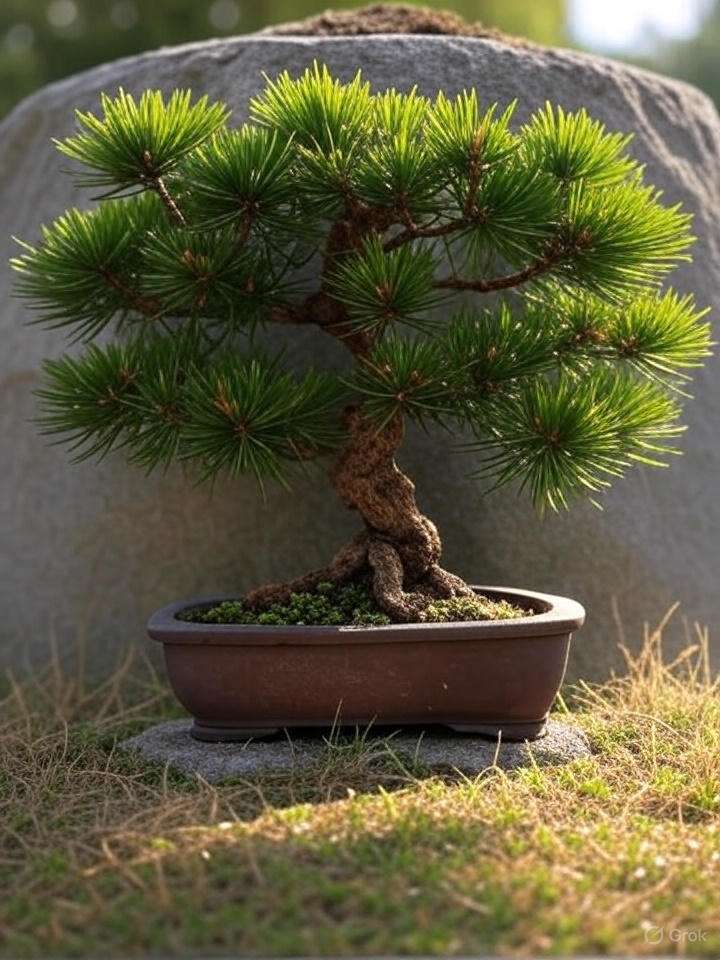
Conclusion
Caring for a bonsai tree juniper indoors can be a rewarding and enjoyable experience, but it requires understanding the unique needs of this hardy yet sensitive tree. With the right sunlight, proper watering techniques, well-draining soil, and occasional pruning, your juniper bonsai can thrive indoors, adding beauty and tranquility to your living space.
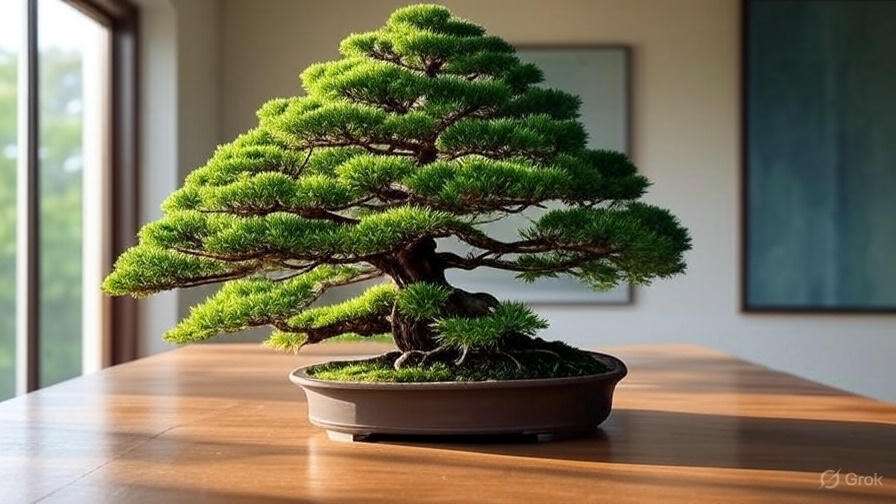
Remember, patience and consistency are key. By following the tips shared in this guide, you’ll be well on your way to growing a healthy, thriving juniper bonsai tree indoors. With a little effort, you’ll enjoy the beauty of your indoor bonsai for years to come—turning your space into a serene, green sanctuary. 
Frequently Asked Questions(FAQ)
How much sunlight does a juniper bonsai tree need indoors?
Juniper bonsai trees need at least 4-6 hours of direct sunlight per day. Place your tree near a south-facing window or under a grow light to ensure it gets enough light to thrive. Lack of light can lead to leggy growth and weak branches.
How often should I water my juniper bonsai indoors?
Water your juniper bonsai when the top inch of soil feels dry. Be sure to water deeply, allowing the water to drain out of the bottom of the pot. Avoid letting the tree sit in excess water, as it can lead to root rot.
What is the best temperature for growing a juniper bonsai indoors?
Juniper bonsai trees prefer temperatures between 60°F to 75°F (15°C to 24°C). They can tolerate cooler indoor conditions but should be kept away from heat sources or drafts that can stress the tree.
Can I keep my juniper bonsai indoors all year round?
Yes, you can grow juniper bonsai indoors year-round, but it’s important to provide enough sunlight, proper humidity, and cool temperatures. Occasionally, taking the tree outside in mild weather can help it thrive.
How do I prevent my juniper bonsai from turning brown indoors?
Brown needles on a juniper bonsai can be caused by overwatering, underwatering, or lack of sunlight. Ensure the tree is getting the right amount of water, place it in a sunny spot, and avoid drafts. Regularly inspect it for pests, which can also cause browning.
How can I increase humidity for my juniper bonsai indoors?
To increase humidity, use a humidity tray filled with water and pebbles beneath your bonsai, or place a small room humidifier nearby. Keep the tree away from dry, hot air from heaters or air conditioners to prevent drying out.
Should I prune my juniper bonsai indoors?
Yes, pruning your juniper bonsai is important for maintaining its shape and health. Trim dead or damaged branches, and shape the tree during the growing season. Prune in late winter or early spring to avoid stressing the tree during dormancy.
How do I know if my juniper bonsai needs repotting?
Report your juniper bonsai every 2-3 years to refresh the soil and ensure healthy root growth. Signs that it needs repotting include roots growing out of the drainage holes, a crowded root system, or slow growth despite proper care.



